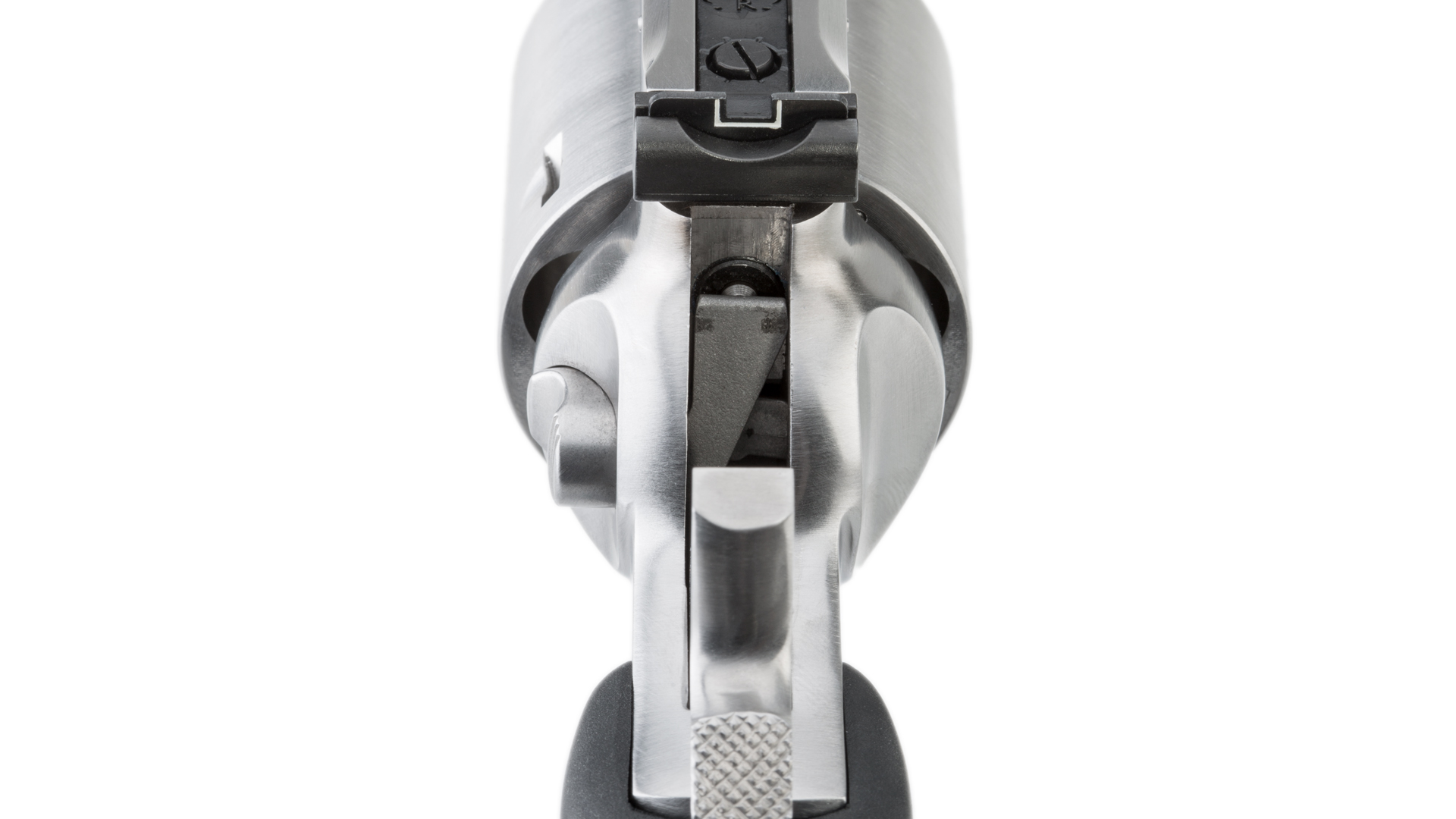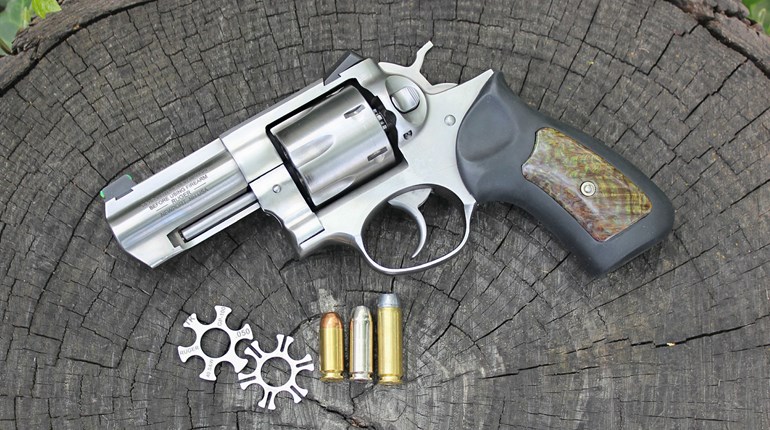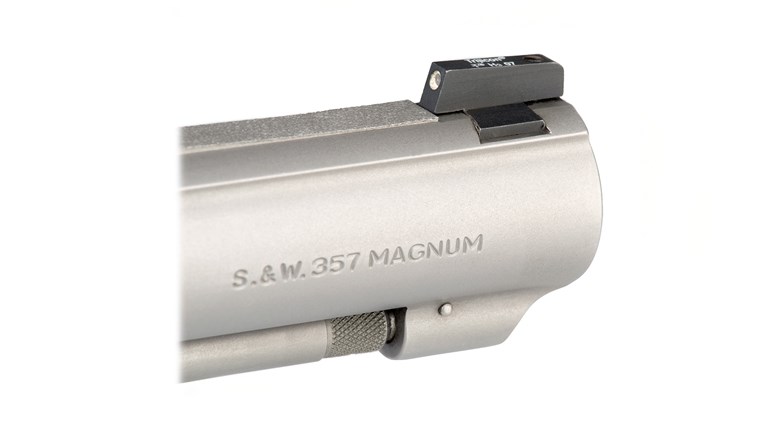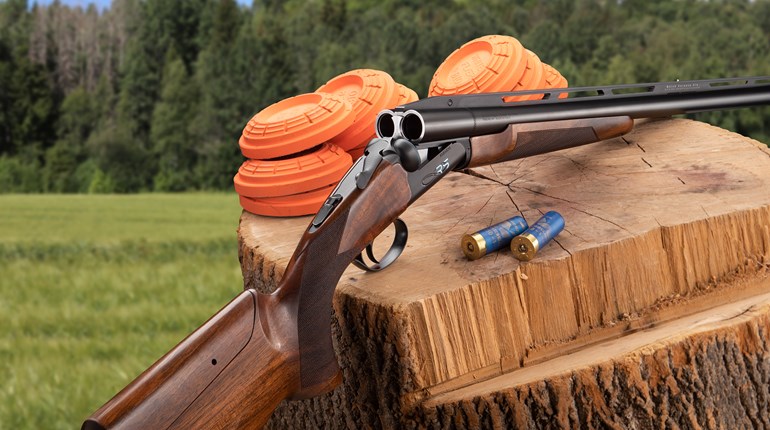
This is a Ruger GP100, which states in its manual that, thanks to the presence of its transfer bar, you can carry six rounds in its cylinder without worry of an unintended discharge.
Do I need to download a double-action revolver equipped with a transfer bar with one round less than full to be safe? Apparently, one gunmaker thinks so.
For years, I have felt completely secure in carrying any of my revolvers into the field as a go-to gun for personal defense and general purposes. All of them have transfer bars to preclude accidental discharge in the event they were inadvertently dropped on the hammer.
Recently, I acquired a new seven-shot .357 Mag. revolver to add to my collection of handguns to shoot and schlep in areas where I need to have both hands free because of the terrain I occasionally encounter. The seven-round capacity was a plus, or so I thought, until I read the owner’s manual that accompanied the revolver. The manual stated in several separate places that a live round should never be carried under the hammer, and that the seventh chamber in the cylinder is meant for placement under the hammer empty for “safety reasons.”
This caused me to dig out the owner’s manuals for the other brands of double-action revolvers equipped with transfer bars I own to see if they recommended something similar. In no case did I find these manufacturers recommended an empty chamber be reserved under the hammer for safety purposes. In fact, one of my favorite brands openly recommended that its guns were totally safe when carried with all chambers loaded.
Maybe I am wrong, but I was under the impression that a transfer bar on a revolver was there to prevent the gun from firing unless the trigger is pulled and that a drop of the gun was unfortunate but would not result in a discharge. Is this wishful thinking or is there an element of truth to my thoughts? I’d like your advice on managing this important safety imperative. Thanks for any help you can provide.
Jack Speedy, via e-mail
A transfer bar, by design and in name, transfers the energy generated from the hammer to the firing pin, indenting the primer and firing the cartridge in the chamber aligned with the barrel of a revolver. The transfer bar can only be in position to transfer the energy of the hammer to the firing pin if the trigger is fully depressed. Otherwise, without the trigger being pulled, the hammer can in no way contact the firing pin, making it impossible to fire the gun.
Some guns use a hammer block, which operates a little differently than the transfer bar, but serves the same purpose. The hammer block mechanically prevents the hammer from contacting the firing pin unless the trigger is fully pulled.
The Sporting Arms and Ammunition Manufacturers Institute (SAAMI,) which sets firearm-industry standards, defines a hammer block as a device intended to isolate the hammer from the firing pin, except when the trigger is pulled. The transfer bar is a design of the firing mechanism to accomplish the same thing.
An easy way to see if the transfer bar or hammer block is working is to first make doubly sure the revolver is unloaded and the immediate area is free of ammunition. Position the revolver so the recoil shield—where the firing pin protrudes through to indent the primer—is easily visible. Then, pull the trigger fully and hold it to the to the rear. The firing pin should be visibly protruding through the recoil shield with the trigger fully pulled. Next, gradually release the trigger forward and the firing pin should retract, no longer protruding through the recoil shield. Once the trigger is released, applying thumb pressure to the back of the hammer will ensure the hammer is separated from the firing pin and the revolver is safe to carry.
Revolvers with transfer bars or hammer blocks in good working order are designed to be carried with the cylinder fully loaded. I am currently unaware of any exceptions in the arena of modern-manufacture, double-action revolvers.
I would never suggest that any gun owner ignore any manufacturers’ recommendations offered in their owner’s manuals. However, I would suggest calling their customer-service folks to get an explanation as to why they felt it necessary to include that bit of information in their manuals; especially if they mentioned it more than one time.
The answer you receive will help you decide whether or not you will choose to employ your revolver for the purposes originally intended.




































